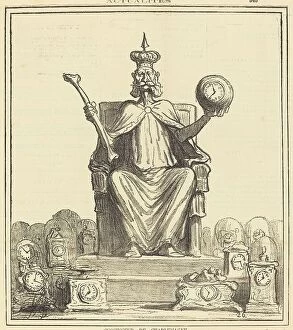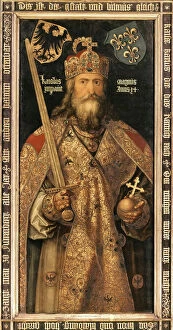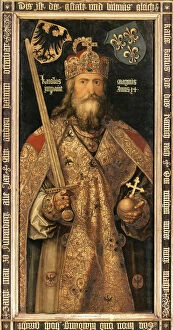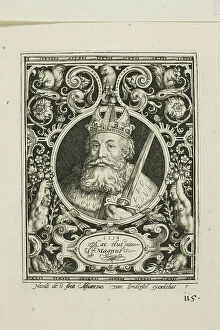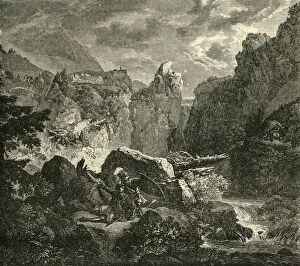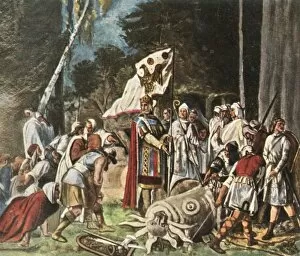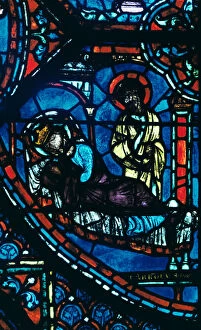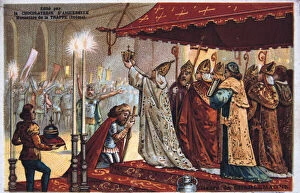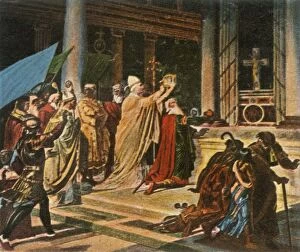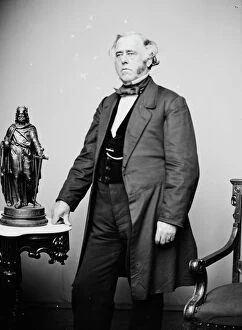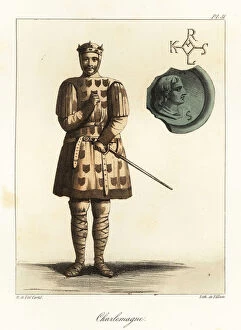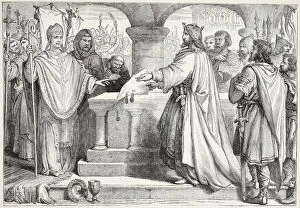Carolus Magnus Collection
"Carolus Magnus: The Great Emperor of the Franks and Romans" Step into the world of Carolus Magnus, also known as Charlemagne
All Professionally Made to Order for Quick Shipping
"Carolus Magnus: The Great Emperor of the Franks and Romans" Step into the world of Carolus Magnus, also known as Charlemagne, a legendary figure who left an indelible mark on history. From his reign over the Empire to his encounters with paganism and dreams of divine intervention, this caption explores various aspects of his life. Le Nouveau Theatre du Monde presents "The Empire of Charlemagne (742-814), " showcasing the vast dominion he ruled over during his time. A map from 1890 reveals the extent of the Kingdom of the Franks under Charlemagne's leadership, highlighting its grandeur. One significant event etched in history is "The Death of Roland at Roncesvalles" in 778 AD. This tragic incident immortalized through an unknown artist's depiction portrays a tale filled with valor and sacrifice. Charlemagne's commitment to Christianity shines through in "Charlemagne destroys a pagan idol. " In this artwork from 1936 by an anonymous creator, we witness him dismantling symbols that clashed with his religious beliefs. Godescalc Gospel Lectionary brings us closer to Carolus Magnus' spiritual side. Created between 781-783 by Godescalc himself, it showcases St. Mark's presence within these sacred texts - a testament to Charlemagne's devotion. "The Crowning of Charlemagne" on Christmas Day in 800 AD remains one of history's most iconic moments. This nineteenth-century representation captures the essence and significance behind this pivotal event when he was crowned Emperor. However, not all was glory for Carolus Magnus; Louis the Pious Doing Penance for Treatment of His Nephew Bernard sheds light on familial conflicts that plagued their dynasty around c818. Another portrayal from 1936 depicts "Coronation of Charlemagne in Rome, " emphasizing how this momentous occasion solidified his position as ruler while leaving an everlasting impact on European history.








